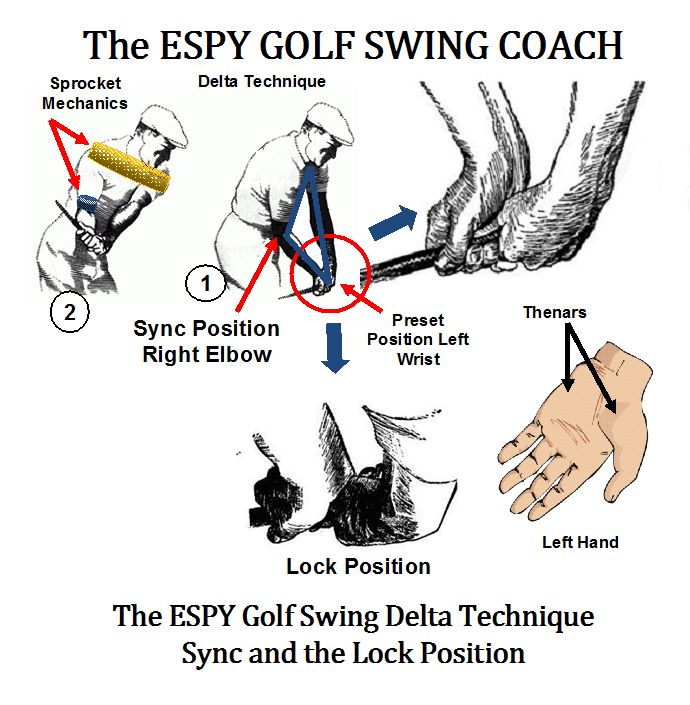
The QATSPY GOLF Inside the Leather Sports and Fitness Page
By: Charles W. Boatright
The Proper Golf Swing Sequence
The anatomy of the golfer’s wrists is probably one of the most important areas for golf instructors and golfers to understand and use in the golf swing instruction. Syncing/Presetting the wrists in the golf swing capitalizes on the body’s natural ability to develop a proper golf swing with power, speed, and control. Ben Hogan specifically mentioned one of the two strongest muscles in the golfer’s wrists, which is the Hypothenar. I refer to these as Thenars in my book, The ESPY Golf Swing Coach. These two muscles in the wrists have direct contact with the handle of the club. This should peak any golfer’s interest.

Syncing/Presetting Figure: The wrists, when set into the proper preset position, establish the correct swing plane, but also eighty (80) percent of the golf swing is completed.
So, it would be reasonable to understand the importance of these two muscles in the wrists, beyond just gripping the club. Why not take full advantage of these muscles to turbocharge the golf swing? There are several professional golfers who focus on presetting the wrists. Among these are PGA and LPGA professionals, such as David Duval, Ken Duke, Marco Dawson, Angela Stanford, Ben Hogan, and P.J. Boatwright. P.J. Boatwright was a distant cousin of mine, and served as the director of the USGA.
NOTE: The wrist is not where the golfer would wear either their wristwatch or GPS yardage watch. This is the lower forearm. The wrists are just below the wristbands on a pair of kickboxing gloves. This is a key distinction to make in one’s golf game. Don’t try to use the lower forearms to preset the golf swing. Instead, use the wrist.
Download you copy of the: Anatomy 101- The Wrists Action in the Golf Swing Session Training Procedure:

